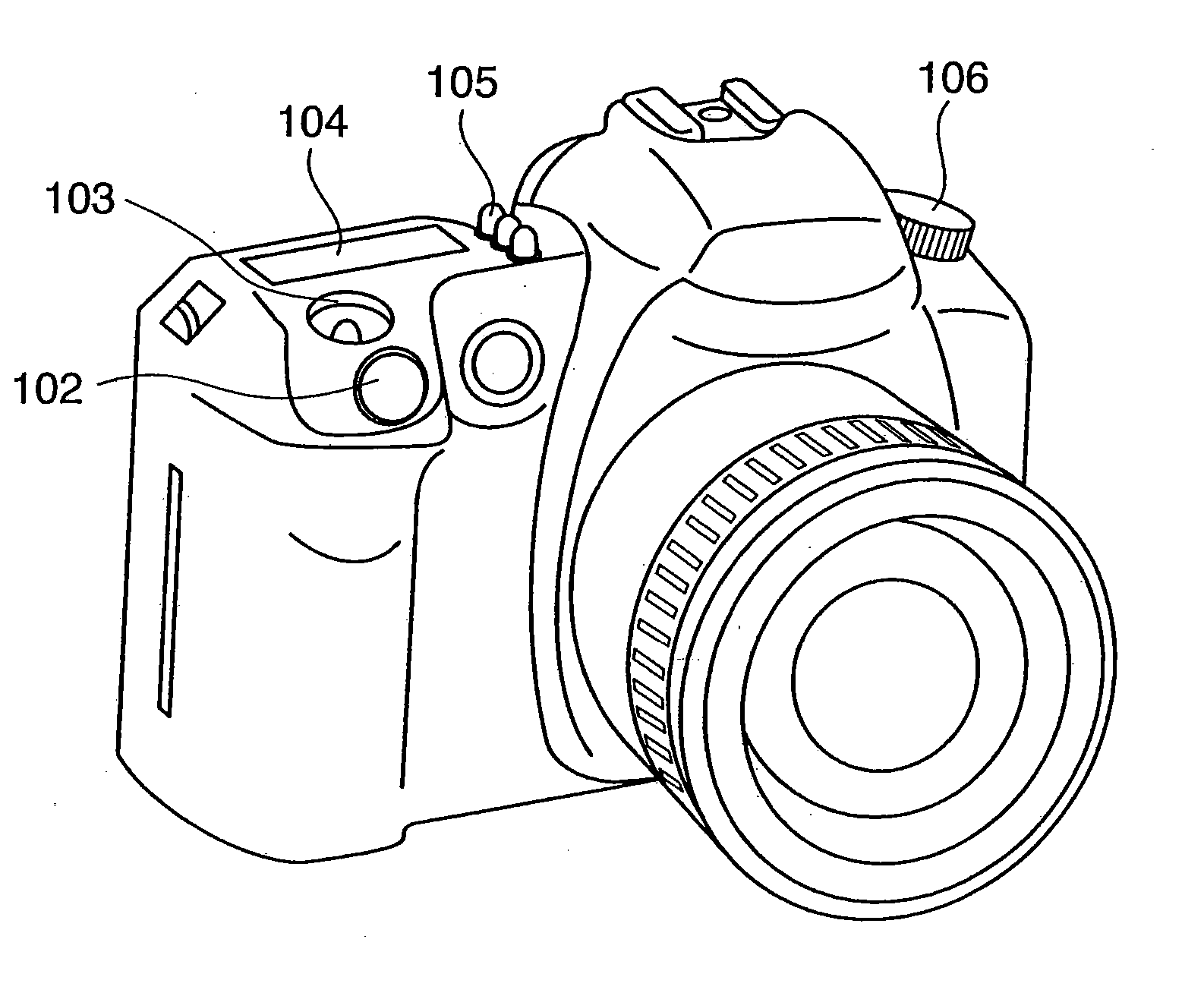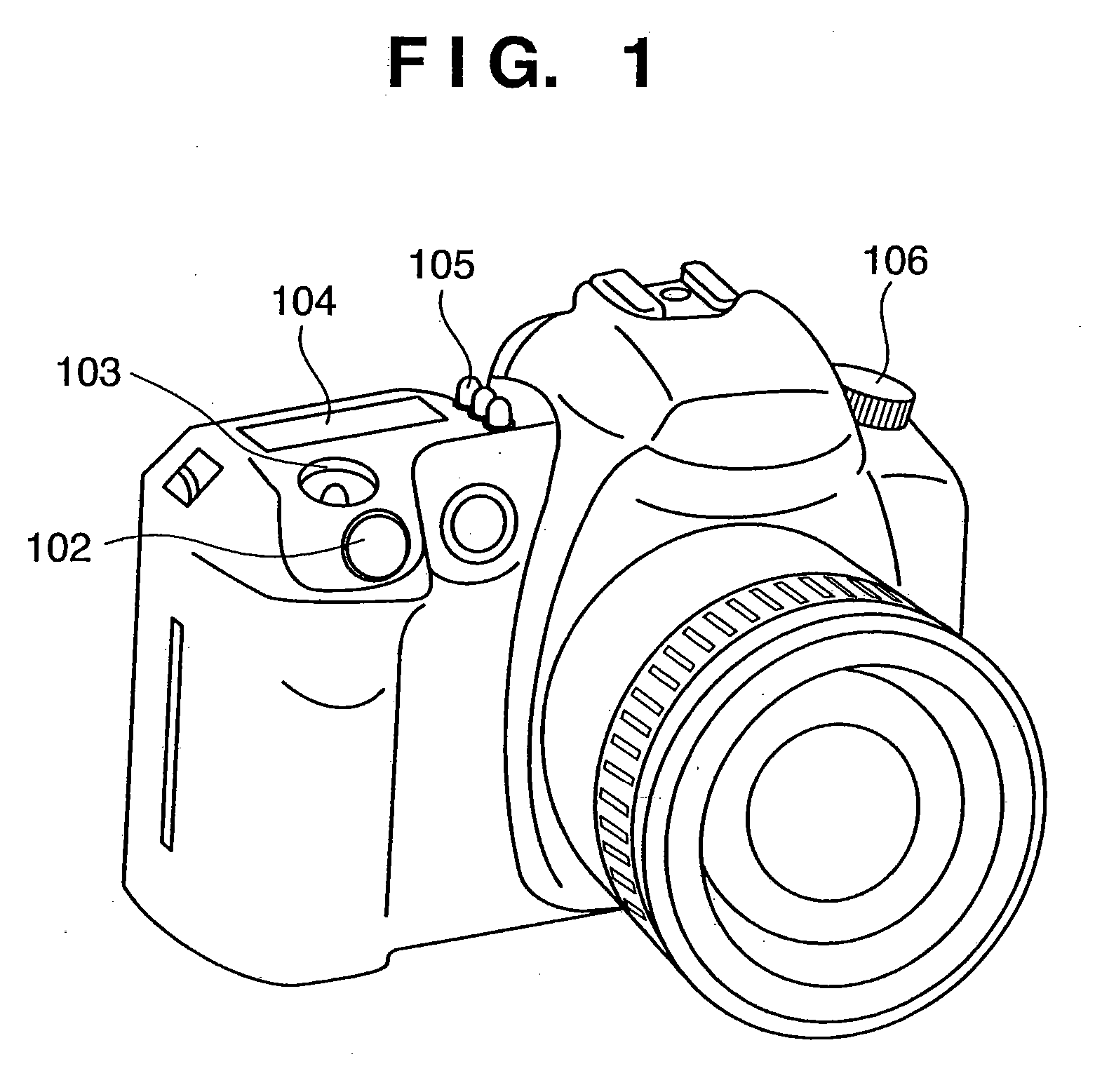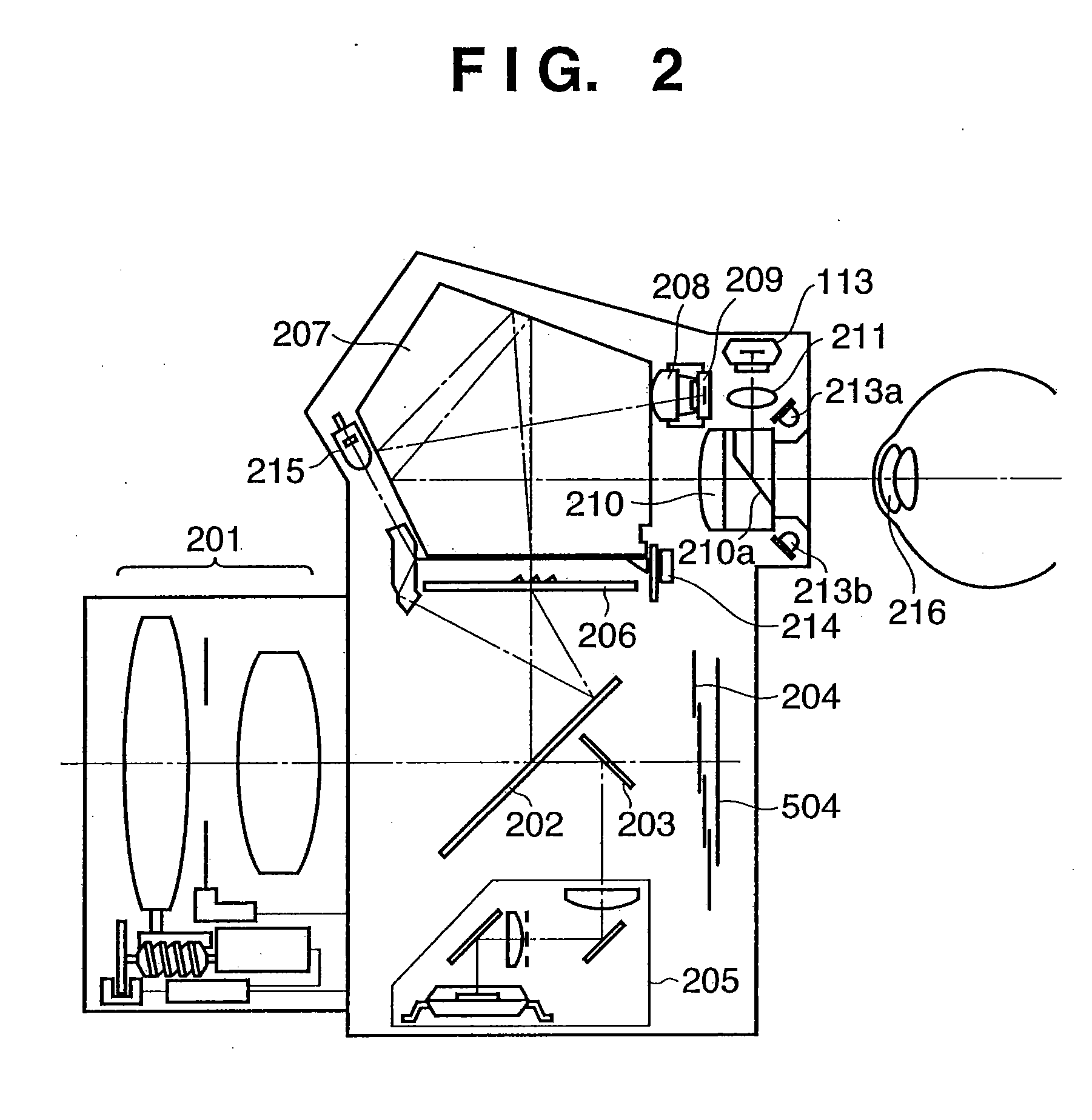Picture taking apparatus and method of controlling same
a technology of image data and control method, applied in the field of image data collection apparatus, can solve the problems of unsatisfactory protection of image data, unjust abandonment of image utilization by third parties, and unnoticed copyright of photographers, etc., and achieve the effect of protecting the copyright of photographic images and transparent operation
- Summary
- Abstract
- Description
- Claims
- Application Information
AI Technical Summary
Benefits of technology
Problems solved by technology
Method used
Image
Examples
Embodiment Construction
[0050] A preferred embodiment of the present invention will now be described with reference to the accompanying drawings.
[0051]FIG. 1 is a front perspective view of a digital still camera according to an embodiment of the present invention. This embodiment will be described taking as an example a case where a biological-information image to be acquired is an iris image.
[0052] Pressing a shutter button 102 on the digital still camera produces a photography-start signal in response to which the image of a subject is captured by an image sensing device. Various settings can be made in response to an input obtained by rotating an electronic dial 103. A liquid crystal panel 104 for displaying photographic information is capable of displaying shutter speed and f-stop value or the set photographic mode, etc. A group 105 of setting buttons is for making various settings. A mode dial 106 is for changing over the mode of photography.
[0053]FIG. 2 is a sectional schematic view illustrating a...
PUM
 Login to View More
Login to View More Abstract
Description
Claims
Application Information
 Login to View More
Login to View More - R&D
- Intellectual Property
- Life Sciences
- Materials
- Tech Scout
- Unparalleled Data Quality
- Higher Quality Content
- 60% Fewer Hallucinations
Browse by: Latest US Patents, China's latest patents, Technical Efficacy Thesaurus, Application Domain, Technology Topic, Popular Technical Reports.
© 2025 PatSnap. All rights reserved.Legal|Privacy policy|Modern Slavery Act Transparency Statement|Sitemap|About US| Contact US: help@patsnap.com



